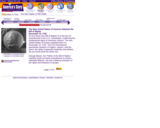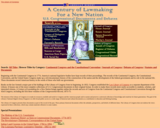
Primary Source Set from the Library of Congress about Abraham Lincoln's political timeline and career
- Subject:
- Social Science
- Material Type:
- Primary Source
- Provider:
- Library of Congress
- Date Added:
- 07/22/2024

Primary Source Set from the Library of Congress about Abraham Lincoln's political timeline and career

Students use Library of Congress primary sources to examine how African-Americans in the Gilded Age were able to form a meaningful identity for themselves and reject the inferior images fastened upon them.

This primary source set includes documents and images from the life of Alexander Hamilton. A teacher guide is included to assist educators in utilizing the primary sources in their instruction.

This primary source set includes documents and images from the lives of American authors in the 19th century. A teacher guide is included to assist educators in utilizing the primary sources in their instruction.

Baseball has been part of the culture of the United States since the earliest days of the nation, and the ways in which the game has changed through the centuries provide opportunities to explore changes in U.S. society. This primary source set includes documents and images. A teacher guide is included to assist educators in utilizing the primary sources in their instruction.

On September 25, 1789, the First Congress of the United States proposed to the state legislatures 12 amendments to the Constitution that met the arguments most frequently advanced against it. The first two proposed amendments, which concerned the number of constituents for each representative and the compensation of congressmen, were not ratified. Articles 3 to 12, however, were ratified by three-fourths of the state legislatures and constitute the first ten amendments of the Constitution, known as the Bill of Rights.

On 12 September 1787, during the final days of the Constitutional Convention, George Mason of Virginia expressed the desire that the Constitution be prefaced by a Bill of Rights. Elbridge Gerry of Massachusetts proposed a motion to form a committee to incorporate such a declaration of rights; however the motion was defeated. This lesson examines the First Congress's addition of a Bill of Rights as the first ten amendments to the Constitution.

In this lesson, students will examine a copy of twelve possible amendments to the United States Constitution as originally sent to the states for their ratification in September of 1789. Students will debate and vote on which of these amendments they would ratify and compare their resulting “Bill of Rights” to the ten amendments ratified by ten states that have since been known by this name.

This lesson relates to the westward movement in the United States in the late nineteenth and early twentieth centuries. Students analyze the role that gunfighters played in the settlement of the West and distinguish between their factual and fictional accounts using American Life Histories: Manuscripts from the Federal Writers' Project, 1936-1940.

This site includes documents from the Continental Congress, the Constitutional Convention and ratification debates, and the first two federal congresses. These documents record American history in the words of those who built our government.

The collection of documents brought together in this project begins to tell the story of the growth of Protestant religion among African Americans during the nineteenth century, and of the birth of what came to be known as the "Black Church" in the United States. This development continues to have enormous political, spiritual, and economic consequences. But perhaps what is most apparent in these texts is the diversity of ways in which that religious tradition was envisioned, experienced, and implemented. From the white Baptist and Methodist missionaries sent to convert enslaved Africans, to the earliest pioneers of the independent black denominations, to black missionaries in Africa, to the eloquent rhetoric of W.E.B. DuBois, the story of the black church is a tale of variety and struggle in the midst of constant racism and oppression. It is also a story of constant change, and of the coincidence of cultural cohesion among enslaved Africans and the introduction of Protestant evangelicalism to their communities.

In this lesson students analyze a single photograph from the Library of Congress collection Civil War Glass Negatives and Related Prints. Using the skills developed, students then find and analyze other images. Conclusions reached will allow students develop links between the Civil War and American industrialization.

They met in Philadelphia in May 1787. Fifty-five men from 12 different states gathered, intending to revise the Articles of Confederation... Thus began the Constitutional Convention – the four-month process of secret argument, debate and compromise that produced a document that would soon be known in all corners of the globe: the Constitution of the United States. This primary source set includes documents and images. A teacher guide is included to assist educators in utilizing the primary sources in their instruction.

Students will investigate a series of maps depicting a voyage by Sir Francis Drake which involved attacks on the Spanish settlements off the coast of Africa (Santiago), Caribbean (Santo Domingo), South America (Cartagena), and North America (St. Augustine). Students will then examine a map of the entire voyage. Students will look closely at the details of each of these depictions and draw conclusions about the individual events as well as the entire voyage.

Information from the Library of Congress about the impact of stances on foreign policy and peace on presidential elections and campaigns.

Information from the Library of Congress about the Founding of the USA, elections, and voting

The papers of nineteenth-century African American abolitionist Frederick Douglass (1818-1895), who escaped from slavery and then risked his freedom by becoming an outspoken antislavery lecturer, writer, and publisher, consist of approximately 7,400 items (38,000 images), most of which were digitized from 34 reels of previously produced microfilm. The collection spans the years 1841-1964, with the bulk of the material dating from 1862 to 1895. Many of Douglass’s earlier writings were destroyed when his house in Rochester, New York, burned in 1872.

George Washington: First in War, First in Peace, and First in the Hearts of His Countrymen consists of three lessons examining George Washington's leadership in the French and Indian War, at the Federal Convention, and as chief executive. They are based on primary source documents from George Washington Papers. The documents from Washington's Letterbooks include focus questions that may be used in Socratic seminars, cooperative learning, individual and group work.

Primary sources are the raw materials of history — original documents and objects that were created at the time under study. They are different from secondary sources, accounts that retell, analyze, or interpret events, usually at a distance of time or place. This webpage will help educators teach students using primary sources and engage them in analyzes these sources.

The William A. Gladstone Collection of African American Photographs provides almost 350 images showing African Americans and related military and social history. The Civil War era is the primary time period covered, with scattered examples through 1945. Most of the images are photographs, including 270 cartes de visite. For the list of approximately 100 different photographers, see the Creator/Related Names Index.